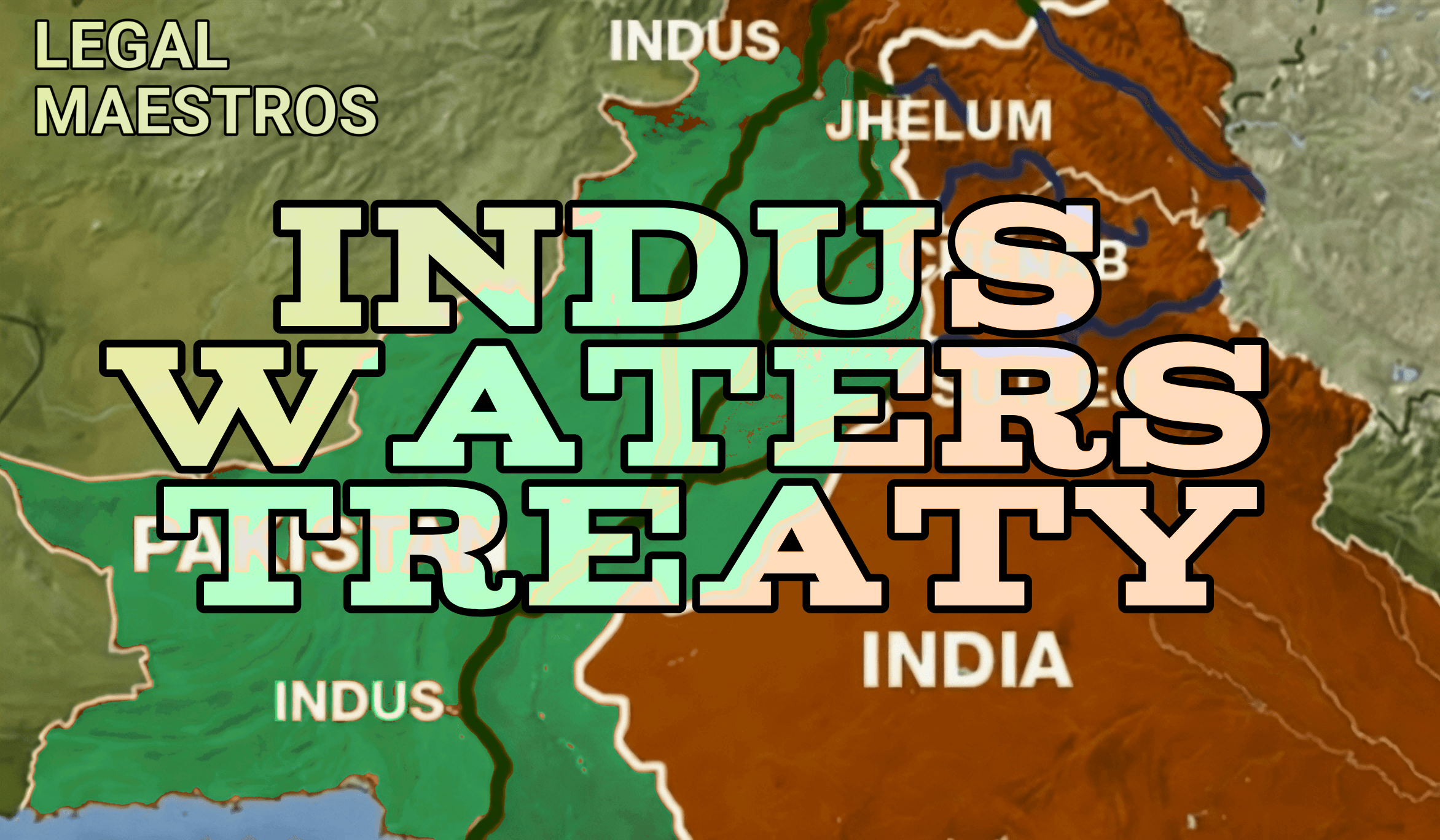
Background and Purposes of the Treaty
Nine years of World Bank-broked negotiations produced the Indus Waters Treaty. It split six rivers of the Indus basin, giving India sole rights over the Beas, Ravi, and Sutlej and allocating the Indus, Jhelum, and Chenab mostly to Pakistan.
Subject to design and flow constraints, the treaty allows India some non-consumptive uses including irrigation and hydroelectric power generation on the western rivers.
Overseeing implementation and technical consultations, a permanent Indus Commission of two commissioners from each nation manages The preamble of the pact stresses in spite of political disagreements mutual goodwill, effective water usage, and collaboration.
For any queries or to publish an article or post or advertisement on our platform, do call at +91 6377460764 or email us at contact@legalmaestros.com.
Systems for Conflict Resolution
The pact built a tiered dispute-resolution system to help manage differences. First questions technically go to the Indus Commission. Should unsolved issues arise, they could then consult an impartial expert.
More important conflicts can be sent to a Court of Arbitration made of technical experts and foreign jurists. As depositary, the World Bank is only marginally involved. Most conflicts were resolved over six decades by means of these systems, therefore demonstrating the durability of the pact.
The water sharing was essentially intact even during hostilities in 1965 and 1971, underscoring its ability to resist strong bilateral tensions.
Recent Suspension of India
Following a fatal attack on visitors in Pahalgam, India declared on 23 April 2025 the suspension of its treaty commitments, therefore putting it in abeyance.
Claiming national security as reason, the Indian government connected the action to allegedly state-sponsored terrorism by Pakistan. India stopped sending alerts to Pakistan on hydroelectric projects and cut data flow exchange on rivers.
Although others contend the treaty lacks a clear suspension clause, it argued the suspension was legal under its terms for extraordinary circumstances.
The Reaction and Legal Challenge from Pakistan
Warning of grave consequences, Pakistan denounced the suspension as a violation of international law and a “act of war.”
Islamabad said it intended to contest India’s choice before the World Bank and the Hague-based systems the treaty envisioned. Claiming Indian activities have already cut Chenab River flows by up to 90 percent, Pakistani officials threatened supplies of hydropower and agricultural.
Pakistan’s own involvement in the Indus Commission was also discontinued, further aggravating the conflict. When one party refutes to participate in the agreed-upon dispute procedures, the stalemate begs issues regarding the enforceability of the pact Reuters.
Possible Effect on Water Availability
Through irrigation, drinking water, and hydropower the Indus basin supports around 250 million people. Any disturbance of river flow may aggravate water scarcity, especially in the dry season. In Pakistan, Indus waters account for more than 90% of all agriculture.
Reduced flows might drive farmers to shrink crop yields, force them to fallow land, and raise food costs. Furthermore suffering could be Indian areas downstream of the eastern rivers if diplomatic reprisals change water flow.
Long-term uncertainty could deter both nations’ irrigation and electricity infrastructure investment.
Social and Financial Results
In rural areas, water shortage can aggravate economic problems. The agricultural exports of Pakistan, including cotton and rice, depend mostly on consistent water availability; disruptions could reduce foreign trade income. Potable water shortages in urban areas could put municipal governments under pressure.
Farmers in India’s Punjab and Jammu areas worried about retaliatory actions compromising canal irrigation. Beyond money, social upheaval could develop as people fight for few resources.
These pressures might tax public services and drive migration from rural areas, hence aggravating security issues already raised by the bilateral conflict.
Ecological and Environmental Risks
Altered river flows can damage ecosystems found along rivers. Through salinization, sudden release or withholding of water disturbs fish migration, diminishes wetland habitats, and worsens soil quality.
Reduced inflows in the Indus Delta have historically threatened Arabian Sea fisheries and mangrove habitats. Unregulated dam operations could aggravate dry month drought severity and monsoonal flood hazards.
Already threatening basin stability is climate change, which causes glacial melt and irregular rainfall.
Treaty procedures on data sharing being suspended compromises community adaptation efforts and raises vulnerability to natural shocks.
Globally Legal and Normative Viewpoints
Treaties under international law are enforceable and demand good-faith fulfillment. Unilateral suspension devoid of grounds stipulated by treaties could represent breach.
Apart from limited conditions including material breach by the other party or fundamental change of circumstances, the Vienna Convention on the Law of Treaties forbids illegal suspension. India runs legal challenge since its security justification might not fit these criteria.
Though it is not an enforcement agent, the World Bank could arbitrate technical disputes. Should parties accept the jurisdiction of the International Court of Justice, absent mutual agreement they could turn to it.
Drawing lessons from other water treaties
Similar pressures were experienced by other international water agreements, but they survived strong dispute systems.
Though signed by all riparians, the Nile Basin Cooperative Framework stresses data exchange and coordinated management. Emphasizing international communication, the Mekong River Commission avoided regional conflicts.
The Rhine and Danube commissions from Europe show the need of real-time flow data exchange and neutral monitoring.
These illustrations imply that treaty lifespan and resilience to political crises depend critically on isolated, apolitical water institutions and open information exchange.
Routines for Resolution
Good resolution calls for reactivating the Indus Commission and involving unbiased experts to evaluate claimed breaches.
While more general political debate addresses security issues, both sides may agree to temporary technical conversations on flow data and project design. Measures of confidence-building including environmental impact studies and cooperative flood forecasts can help to reduce mistrust.
Technical agencies and foreign partners could help to arrange seminars on sustainable water usage and climate adaption. Restoring treaty functions depends ultimately on divorcing water management from more general geopolitical conflicts.
Final Thought
By juggling difficult hydrological and political objectives, the Indus Waters Treaty has survived six decades of strife. Its latest suspension runs to compromise a pillar of regional stability and water security.
Legal rules support following treaty dispute procedures; breach without regard compromises the ecosystems, communities, and economy of either country.
Reviving the pact depends most on using neutral, technical cooperation based on lessons learned from earlier river agreements. On the subcontinent, peace and prosperity depend on group stewardship of shared waters even in a changing environment.








1 thought on “Breaking Down the Indus Waters Treaty: Provisions, Suspension, and Potential Consequences”